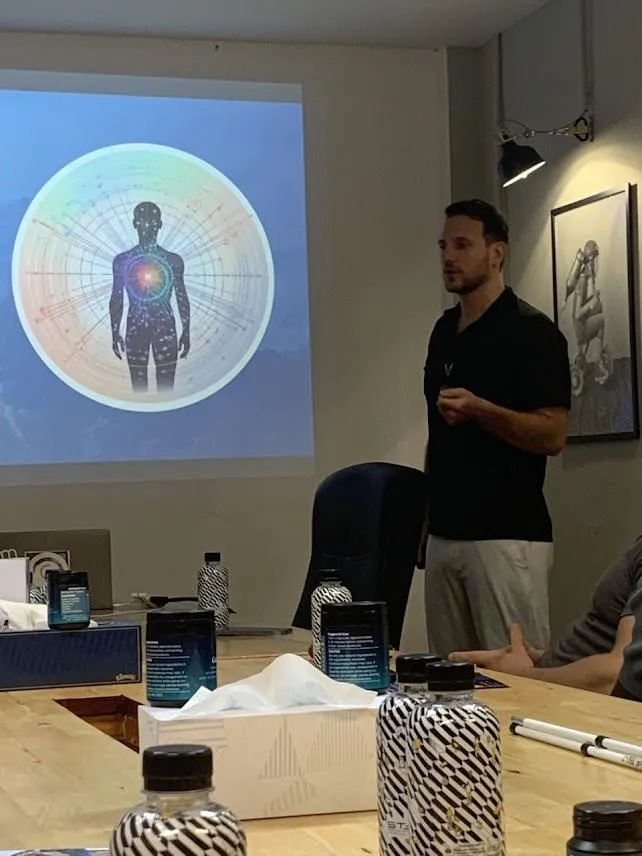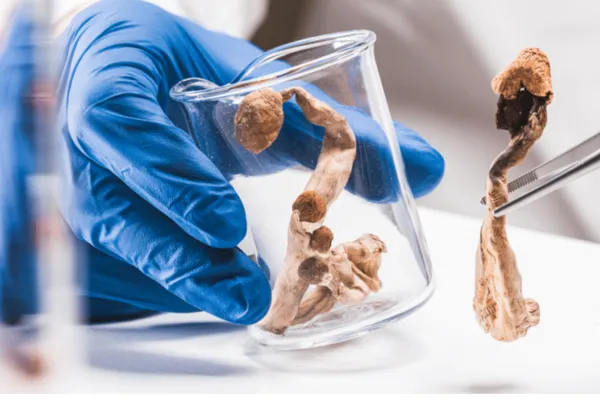Do you have a calling?
Are you looking for yourself?
Henosis is founded upon the idea that every human being in unique and has a purpose. You have aspects that make you so different to every other human on the planet, yet such deep similarities that show we're all the same.
Origin Story of Henosis
The Greek word henosis refers to the process of achieving a state of oneness or unity with the divine. This concept has been central to many mystical and philosophical traditions throughout history, particularly in ancient Greece.
The term henosis comes from the Greek word ἕνωσις, which means "union" or "merging." It was used by several ancient Greek philosophers, including Plotinus and Proclus, to describe the goal of mystical practice.
For these philosophers, the goal of mystical practice was to transcend the limitations of the physical world and achieve a direct experience of the divine.
This experience was seen as a merging or union with the divine, a state of consciousness in which the individual and the divine were no longer separate entities but were united as one.
In some mystical traditions, henosis was seen as a gradual process of spiritual development, in which the individual gradually purifies their mind and body and becomes more attuned to the divine. In others, it was seen as a sudden, spontaneous experience that could occur at any time.
The concept of henosis was also central to many ancient Greek religious practices, particularly in the mystery religions. These were secretive, initiatory cultures that focused on the direct experience of the divine through ritual practices, often involving ecstatic states of consciousness.
Henosis has also been an important concept in the history of Christianity, particularly in the Eastern Orthodox tradition. In this tradition, henosis is seen as the ultimate goal of spiritual practice, a state of union with God that is achieved through prayer, contemplation, and asceticism.

Overall, the concept of henosis is a complex and multifaceted one that has played a central role in many mystical and philosophical traditions throughout history. Whether seen as a gradual process of spiritual development or a sudden, spontaneous experience, it represents the human longing for a direct experience of the divine, and the recognition that this experience lies at the heart of our deepest aspirations and desires.

HENOSIS PURPOSE
Henosis was formed to hold space for the lost soul, questioning their current reality, and to provide alternative information and experiences that may serve as the launching pad for their new life.

HENOSIS VISION
We believe that all humans deserve to live a life of fulfillment and to participate in the raising of the vibrational frequency of earth to expand consciousness.

HENOSIS MISSION
Henosis assists with the shedding of our limiting beliefs, overcoming our emotional and energetic blocks and reprogramming harmful habits and biases. We develop educational information, events and activities to promote ancient wisdom, alternative medicines, new age science and holistic healing modalities to empower the individual to discover their own limitless possibilities and increase awareness.
What the greats say about Henosis over Millenia
Within the word henosis lies a powerful invitation to experience the unity and oneness that exists within and around us, to dissolve the illusion of separateness and awaken to the truth of our interconnectedness with all of life.
Plato
Henosis is the transcendence of the self, the merging of the individual with the divine, and the attainment of spiritual enlightenment.
Eckhart Tolle
The experience of henosis is a mystical journey, a quest for the ultimate truth and the ultimate reality.
Carl Jung
In the state of henosis, the individual ego dissolves into the infinite, and the soul merges with the divine.
Deepak Chopra
Henosis is the realisation that we are all interconnected, that we are all part of a greater whole, and that we are all one.
Alan Watts
In the state of henosis, the boundaries between self and other dissolve, and the individual becomes one with the universe and all that exists.
Sri Ramana Maharshi
Henosis is the state of being in which one transcends the limitations of the ego and realises the true nature of the self as part of the divine.
Buddha
Henosis is the ultimate liberation, the release from the bonds of the ego and the attainment of eternal bliss and peace.
Henosis
Henosis represents the journey of transcending individuality, merging with the divine, and awakening to the unity that connects all of existence.
Interested in changing your life?
Check out some of our free articles
HEALTH & WELLBEING

Study Demonstrates Psilocybin's impact on Trace Fear in Mice - Major step for microdosing and PTSD sufferers.
Beginning at minute 39 and 30 seconds, Stamet describes a study that demonstrates the diminishing of Trace Fear Conditioning, the main proponent of PTSD, by microdosing Psilocybin. He explains the mice in the study were, somewhat unceremoniously shocked for the good of science. They were shocked after a low tone was played for 30 seconds, and after a number of shocks, like maslows dogs, the PTSD would have them cowering whilst hearing the tone, expecting a shock.
After macrodosing psilocybin, it took them 10 cycles of the noise, without the shock, to diminish the PTSD response, where on microdosing, amazingly, they only required two cycles, demonstrating that microdosing could be more impactful than macrodosing at reducing the trace fear conditioning. You can read more about this below which shows the diminishing or extinction of the trace fear conditioning.
What is Trace Fear Conditioning?
Trace fear conditioning is a type of classical conditioning in which an organism learns to associate a neutral stimulus (such as a tone or light) with an aversive stimulus (such as a shock or loud noise) that follows it after a brief time delay (the trace interval).
During trace fear conditioning, the neutral stimulus (conditioned stimulus, CS) is presented for a short period of time and then terminated, followed by a delay period (trace interval) during which there is no stimulus. After the trace interval, the aversive stimulus (unconditioned stimulus, US) is presented. Through this process, the organism learns to associate the CS with the US and begins to show fear responses (such as freezing behavior) in the presence of the CS alone.
Trace fear conditioning is often used as a model for studying fear learning and memory in both animals and humans, and has been implicated in the development of anxiety disorders and post-traumatic stress disorder (PTSD).
What does this demonstrate regarding PTSD and Psilocybin?
The presentation demonstrates that low doses of nearly imperceivable Psilocybin has the potency to increase the strength of your brain. The Psilocybin diminishes or removes all together the trace fear conditioning which should have an extraordinary effect on PTSD patients. The low doses tended toward neuroregeneration where the high doses did not, perhaps even restricting neuroregeneration, perhaps due to being washed with such a high dose, it restricts neuroregeneration with an overload to the senses. Also, neurons takes days to grow, which may also explain why microdosing impacts a higher level of neuroregeneration than macrodosing.
Enjoy the presentation below and comment some of your takeaways in the comment section below.
PSYCHOLOGY

Study Demonstrates Psilocybin's impact on Trace Fear in Mice - Major step for microdosing and PTSD sufferers.
Beginning at minute 39 and 30 seconds, Stamet describes a study that demonstrates the diminishing of Trace Fear Conditioning, the main proponent of PTSD, by microdosing Psilocybin. He explains the mice in the study were, somewhat unceremoniously shocked for the good of science. They were shocked after a low tone was played for 30 seconds, and after a number of shocks, like maslows dogs, the PTSD would have them cowering whilst hearing the tone, expecting a shock.
After macrodosing psilocybin, it took them 10 cycles of the noise, without the shock, to diminish the PTSD response, where on microdosing, amazingly, they only required two cycles, demonstrating that microdosing could be more impactful than macrodosing at reducing the trace fear conditioning. You can read more about this below which shows the diminishing or extinction of the trace fear conditioning.
What is Trace Fear Conditioning?
Trace fear conditioning is a type of classical conditioning in which an organism learns to associate a neutral stimulus (such as a tone or light) with an aversive stimulus (such as a shock or loud noise) that follows it after a brief time delay (the trace interval).
During trace fear conditioning, the neutral stimulus (conditioned stimulus, CS) is presented for a short period of time and then terminated, followed by a delay period (trace interval) during which there is no stimulus. After the trace interval, the aversive stimulus (unconditioned stimulus, US) is presented. Through this process, the organism learns to associate the CS with the US and begins to show fear responses (such as freezing behavior) in the presence of the CS alone.
Trace fear conditioning is often used as a model for studying fear learning and memory in both animals and humans, and has been implicated in the development of anxiety disorders and post-traumatic stress disorder (PTSD).
What does this demonstrate regarding PTSD and Psilocybin?
The presentation demonstrates that low doses of nearly imperceivable Psilocybin has the potency to increase the strength of your brain. The Psilocybin diminishes or removes all together the trace fear conditioning which should have an extraordinary effect on PTSD patients. The low doses tended toward neuroregeneration where the high doses did not, perhaps even restricting neuroregeneration, perhaps due to being washed with such a high dose, it restricts neuroregeneration with an overload to the senses. Also, neurons takes days to grow, which may also explain why microdosing impacts a higher level of neuroregeneration than macrodosing.
Enjoy the presentation below and comment some of your takeaways in the comment section below.
HAPPINESS

Study Demonstrates Psilocybin's impact on Trace Fear in Mice - Major step for microdosing and PTSD sufferers.
Beginning at minute 39 and 30 seconds, Stamet describes a study that demonstrates the diminishing of Trace Fear Conditioning, the main proponent of PTSD, by microdosing Psilocybin. He explains the mice in the study were, somewhat unceremoniously shocked for the good of science. They were shocked after a low tone was played for 30 seconds, and after a number of shocks, like maslows dogs, the PTSD would have them cowering whilst hearing the tone, expecting a shock.
After macrodosing psilocybin, it took them 10 cycles of the noise, without the shock, to diminish the PTSD response, where on microdosing, amazingly, they only required two cycles, demonstrating that microdosing could be more impactful than macrodosing at reducing the trace fear conditioning. You can read more about this below which shows the diminishing or extinction of the trace fear conditioning.
What is Trace Fear Conditioning?
Trace fear conditioning is a type of classical conditioning in which an organism learns to associate a neutral stimulus (such as a tone or light) with an aversive stimulus (such as a shock or loud noise) that follows it after a brief time delay (the trace interval).
During trace fear conditioning, the neutral stimulus (conditioned stimulus, CS) is presented for a short period of time and then terminated, followed by a delay period (trace interval) during which there is no stimulus. After the trace interval, the aversive stimulus (unconditioned stimulus, US) is presented. Through this process, the organism learns to associate the CS with the US and begins to show fear responses (such as freezing behavior) in the presence of the CS alone.
Trace fear conditioning is often used as a model for studying fear learning and memory in both animals and humans, and has been implicated in the development of anxiety disorders and post-traumatic stress disorder (PTSD).
What does this demonstrate regarding PTSD and Psilocybin?
The presentation demonstrates that low doses of nearly imperceivable Psilocybin has the potency to increase the strength of your brain. The Psilocybin diminishes or removes all together the trace fear conditioning which should have an extraordinary effect on PTSD patients. The low doses tended toward neuroregeneration where the high doses did not, perhaps even restricting neuroregeneration, perhaps due to being washed with such a high dose, it restricts neuroregeneration with an overload to the senses. Also, neurons takes days to grow, which may also explain why microdosing impacts a higher level of neuroregeneration than macrodosing.
Enjoy the presentation below and comment some of your takeaways in the comment section below.

